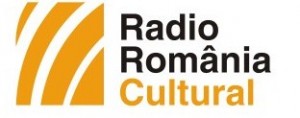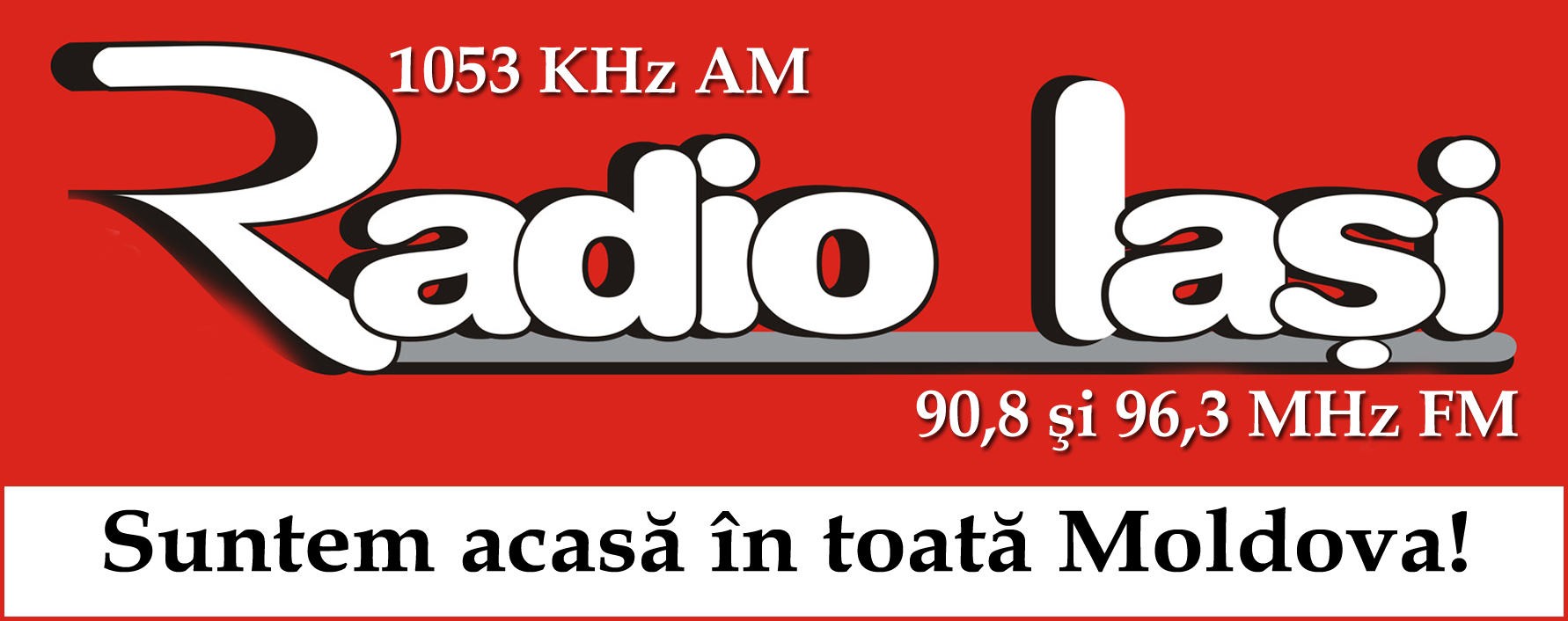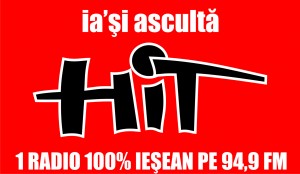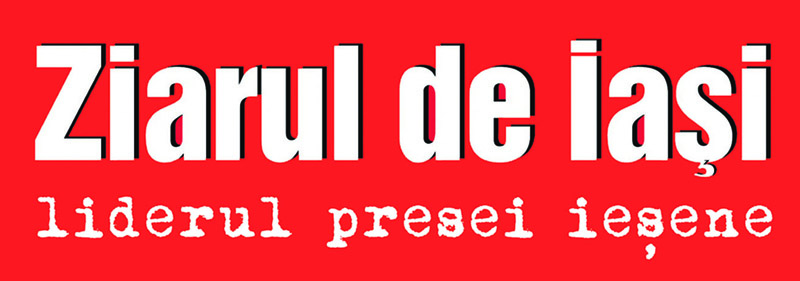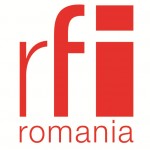ALMA MATER IASSIENSIS
Alexandru Ioan Cuza
-A Historical Approach-
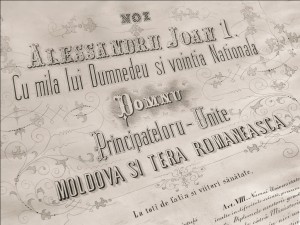 The solemn inauguration of the Iaşi University, on October 26th, 1860, was to mark a long evolution and it represented the first great step from medieval high school to modern higher education. The University in the “cultural capital of Romania” – as Iaşi was labeled – had its roots in a remarkable development of national education. During the pre-modern age of Romania’s history (17th and 18th centuries), many colleges had been founded, destined to supply the society with educated people, in accordance with the needs of those times. The social, economic, administrative and cultural renewal generated other requirements too, from among which education was considered to be “the most valuable and ethical of all the riches in the world”. Academic colleges were founded in Cotnari (near Iaşi – 1563), Alba Iulia (1622), Iaşi (1640), Târgovişte (1646), Bucureşti (1678), where many of the most famous scholars of the time were invited to teach: Johann Sommer (who did his studies in Frankfurt on Oder), Gaşpar Peucer (former Rector of the Wittenberg University), Joachim Rhaeticus (Copernicus’ disciple), Martin Opitz (from Heidelberg), Johann Heinrik Alstedt (from Herborn), Johann Bisterfeld (from Heidelberg),Sofronie Poriatzky (from Kiev), Pantelimon Ligaridis (from Chios). These colleges were transformed and developed into academies, which represented the transitory step towards a modern university.
The solemn inauguration of the Iaşi University, on October 26th, 1860, was to mark a long evolution and it represented the first great step from medieval high school to modern higher education. The University in the “cultural capital of Romania” – as Iaşi was labeled – had its roots in a remarkable development of national education. During the pre-modern age of Romania’s history (17th and 18th centuries), many colleges had been founded, destined to supply the society with educated people, in accordance with the needs of those times. The social, economic, administrative and cultural renewal generated other requirements too, from among which education was considered to be “the most valuable and ethical of all the riches in the world”. Academic colleges were founded in Cotnari (near Iaşi – 1563), Alba Iulia (1622), Iaşi (1640), Târgovişte (1646), Bucureşti (1678), where many of the most famous scholars of the time were invited to teach: Johann Sommer (who did his studies in Frankfurt on Oder), Gaşpar Peucer (former Rector of the Wittenberg University), Joachim Rhaeticus (Copernicus’ disciple), Martin Opitz (from Heidelberg), Johann Heinrik Alstedt (from Herborn), Johann Bisterfeld (from Heidelberg),Sofronie Poriatzky (from Kiev), Pantelimon Ligaridis (from Chios). These colleges were transformed and developed into academies, which represented the transitory step towards a modern university.
In the 18th century and the beginning of the 19th century, higher education in the Romanian Principalities made significant progress. Its structure and curriculum resembled more and more those from European schools. Fresh ideas, resulting from the new political context, gave a new dimension to our higher education. The curricula became more modern and showed a genuine preference for the study of sciences, practical applications and research. The introduction of modern languages ensured the access to European literature, the bearer of new ideologies.
During that period, higher education in the Romanian space was represented by the University of Cluj and by the Prince’s Academies in Bucharest and Iaşi.
Founded in 1714 at the initiative of Prince Nicolae Mavrocordat and with the support of Hrisant Notara – Patriarch of Jerusalem, Academia Domnească (the Prince’s Academy of Iaşi) can be compared with similar European Academies of the time. Through its professional and pedagogical synchronism, it could ensure a real university education, standing on the same level with Italian and German universities. Courses were taught in Greek, Latin, Italian and Arabic by such professors as Constantin Malatul, former great orator of the Constantinople church, Theodore from Târnova, Nicholas Hiliodromeus, professor of Greek literature and philosophy. Then, after the 1766 re-organization, the Iaşi high school was known as the “Academy of Learning and Sciences” (with a six years study period), this being a clear proof that the institution was destined not only to education, but also to the development of sciences. The Prince’s Academy of Iaşi became more and more oriented towards a realistic education, stress being put especially on arithmetic, geometry, algebra, trigonometry, physics and “engineering sciences” later on. The school documents of the time make special mention of three great scholars: Nicolae Cercel, honoris causa professor of the French Academy of Sciences and of the Russian Imperial Academy, who taught courses of mathematics and experimental physics; Nichifor Theotokis, professor of physics and modern mathematics; Iosif Moesiodax, professor of mathematics and astronomy. Besides Latin, the curriculum included French too, in which courses of philosophy were taught. In the Prince’s Academy of Iaşi, the works of Newton, Leibnitz, Wolff, Orlando, Copernicus, Galilei, Descartes, Locke, Halley were well known.The Academy hosted a library where librarians, editors and booksellers were supposed to donate a copy of each new book.
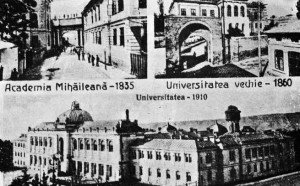 At the beginning of the 19th century, the high school of Iaşi was re-organized. It was called Higher School of Sciences and a new course was introduced in the curriculum: engineering science, which was taught in Romanian by Gheorghe Asachi, the young Romanian scholar who had just returned from a period of study abroad (Lwow, Vienna, and Rome). He also taught mathematics, geodesics and topography. From among other famous professors of this academy, mention must be made of the following: Daniil Philipide, who graduated the Academy of Bucharest, continued his studies at the Universities of Padova, Paris and Vienna and taught physics, chemistry, astronomy, geography and logic; Dimitrie Govdelas, who took his doctoral degree at the University of Pesta, being equally appreciated by his colleagues from the Universities of Gottingen, Berlin, Paris and St.Petersburg; he taught mathematics, cosmography and chronology; Ştefan Dungas, who studied philosophy and mathematics at the German Universities of Halle, Gottingen and Jena; he taught courses of philosophy; Christian Flechtenmacher taught Latin and Anania Cuzanu taught law.
At the beginning of the 19th century, the high school of Iaşi was re-organized. It was called Higher School of Sciences and a new course was introduced in the curriculum: engineering science, which was taught in Romanian by Gheorghe Asachi, the young Romanian scholar who had just returned from a period of study abroad (Lwow, Vienna, and Rome). He also taught mathematics, geodesics and topography. From among other famous professors of this academy, mention must be made of the following: Daniil Philipide, who graduated the Academy of Bucharest, continued his studies at the Universities of Padova, Paris and Vienna and taught physics, chemistry, astronomy, geography and logic; Dimitrie Govdelas, who took his doctoral degree at the University of Pesta, being equally appreciated by his colleagues from the Universities of Gottingen, Berlin, Paris and St.Petersburg; he taught mathematics, cosmography and chronology; Ştefan Dungas, who studied philosophy and mathematics at the German Universities of Halle, Gottingen and Jena; he taught courses of philosophy; Christian Flechtenmacher taught Latin and Anania Cuzanu taught law.
After a long existence, Romanian higher education became a fundamental institution, by means of which our society had to and could synchronize with the European society, creating its own values that were so well demonstrated during the “Enlightenment”. It was education that permitted, at the beginning of the modern age, the crystallization and completion of the national spirit and our integration in Europe.
An important moment in the evolution of Romanian higher education was the foundation of Michael’s Academy (“Academia Mihăileană”) in Iaşi. It was inaugurated on 16 June 1835. The new school, created under the auspices of Prince Michael Sturdza, was destined to strive for progress and to become (as its founder had declared) an institution where courses were to be taught in the national language, “in accordance with the standards of the enlightened Europe”. The teaching process was organized in the framework of three faculties, philosophy, law and theology; other two practical courses (geometry and economics) were also taught, thus resembling to a wider extent the Austrian and German academies. At Michael’s Academy, teaching was ensured by such illustrious scholars as Eftimie Murgu, professor of philosophy, Damaschin Bojinca, professor of law, Ion Ghica, professor of law, mineralogy and political economy, Mihail Kogălniceanu, historian, Christian Flechtenmacher, professor of law.
It was obvious that the foundation of a modern university, in accordance with the imperatives of the 19th century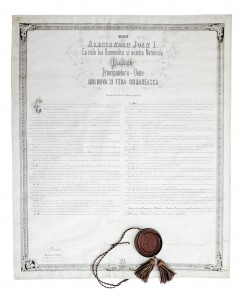 (“the century of nationalities”), could no longer be delayed. The revolutionary spirit of 1848, which demanded equal and free education,university and polytechnic schools, pedagogical and vocational schools, navigation and commerce schools, was finally victorious.
(“the century of nationalities”), could no longer be delayed. The revolutionary spirit of 1848, which demanded equal and free education,university and polytechnic schools, pedagogical and vocational schools, navigation and commerce schools, was finally victorious.
The inauguration of the University of Iaşi took place on October 26th, 1860, in an atmosphere of enthusiasm resulting from the election of Prince Alexandru Ioan Cuza and the union of the Romanian Principalities. Aiming to serve the entire Romanian society through science, it underwent a continuous process of development, both from the structural and the qualitative points of view.
With only three faculties at the beginning, law, philosophy and theology (the last one was discontinued in 1864 and re-inaugurated in 1933), the University of Iaşi was re-organized by the Law of Education that was promulgated by Prince Alexandru Ioan Cuza on 5 December 1864. According to the new law, the courses were to be structured into four faculties: the Faculty of Philosophy and Letters, the Faculty of Sciences (which, by diversifying its section of physics and chemistry, developed in 1937 into the Polytechnic School of Iaşi, known nowadays as the “Gheorghe Asachi” Technical University), the Faculty of Law and the Faculty of Medicine (which had actually been functioning since 1879, but separated from the University in 1948 and became an independent institute, known at present under the name of “Grigore T.Popa” University of Medicine and Pharmacy).
Another law, promulgated in 1898, whose initiator was the mathematician Spiru Haret, came to answer the new imperatives at the end of century. In Spiru Haret’s opinion, universities should be not only high schools, but also centers of culture, destined to stimulate knowledge and creation. Stimulated by the new law, the University of Iaşi diversified its profiles, increased the number of sections, departments and subjects taught. In October 1897, the new University Palace in Copou was inaugurated (the present main university building), an imposing edifice that could ensure the best conditions for the development of education and science.
The development process of the University of Iaşi continued after World War I (1919 – 1940) to such an extent that this higher education institution was similar with other great European universities.
By accomplishing its national unity in 1918, Romania became a state with new demographical and economic resources. In the period that followed, spiritual harmonization of all Romanians became possible. New structures and institutions as well as a political regime based on advanced principles of democracy were created. The main characteristic of the period was the evolution of the people through culture and instruction. A permanent concern of the academic staff and of the political forces was the organization and improvement of education. The university quadrilateral (Iaşi, Bucharest, Cluj and Cernăuţi) ensured the achievement of the objectives dictated by Romania’s real needs.
The University of Iaşi continued to focus the interests of all Romanians and stimulated many of the people wanting to complete their education to come study in the old Moldavian capital. Higher education in Iaşi was represented by renowned scholars, most of them having studied at great European universities.
In the humanities, the following personalities are worth mentioning: Titu Maiorescu (who was a Rector too), a philosopher of culture, literary critic and aesthetician; Vasile Conta, a philosopher; Dimitrie Gusti, the founder of the Romanian school of sociology; Petre Andrei, representative for sociology and ethics; Al. Caludian, sociologist; Mihai Ralea, a psychologist, sociologist and aesthetician; Ion Petrovici, a philosopher, Ştefan Bârsănescu, a pedagogue, Vasile Pavelcu, a psychologist, Ernest Stere, a philosoper, Petre Botezatu, a logician; Al. Philippide, Iorgu Iordan and Gh. Ivănescu, philologists; I. Marinescu, Cezar Papacostea, C. Balmuş and Th. Simenschy, who highlighted classical philology, Ilie Bărbulescu and V. Harea who developed the Slavic philology, Traian Bratu (former Rector), a specialist in German studies and A. Naum, Ch. Drouhet and N.I. Popa, specialists in French studies. The history of Romanian literature was represented by such literary theoreticians and critics of great authority as Garabet Ibrăileanu, Octav Botez, George Călinescu and Al. Dima. History and history of philosophy were highly recommended by other personalities such as A.D. Xenopol (also former Rector) and, later on, by scientific authorities like I. Ursu, Orest Tafrali, Gh. Brătianu, Ilie Minea, Radu Vulpe and Andrei Oţelea (a former University Rector). Law is connected with the names of Matei B. Cantacuzino (former Rector), N. Daşcovici, N. Titulescu (who became a diplomate and represented Romania in the League of Nations), Traian Ionaşcu, A. Djuvara, Ştefan Berechet and Valeriu Bulgaru. Economic studies, founded by I. Ghica at Michael’s Academy, were illustrated by I. Strat and Gh. Zane.
Exact sciences enjoyed an exceptional development after the creation of the modern university. N. Culianu (who was also a Rector), Al. Myller (the founder of the Mathematics Seminar and former Rector), S. Stoilov, Octav Mayer, Gh. Vrânceanu, Gr.C. Moisil, I. Creangă (former Rector), Al. Climescu, D. Mangeron, Ilie Popa, Mendel Haimovici and Adolf Haimovici were the ones who made the Iaşi school of mathematics famous. A reputable school of physics was created by Ştefan Micle (former Rector), Dragomir Hurmuzescu and P. Bogdan. It is in this atmosphere that the creative spirit of Ştefan Procopiu (his name is connected with the magnetone, 1912, “the Procopiu phenomenon”) and of Horia Hulubei developed. Chemistry was represented by such well-known personalities as Petru Poni, Anastasie Obregia, Petru Bogdan (former Rector), N.Costăchescu, C.V. Gheorghiu and Radu Cernătescu. Natural sciences were also represented at their highest levels: Grigore Cobălcescu, V. Buţureanu, Ion Simionescu (former Rector), I. Atanasiu, A. Fătu (founder of the Botanical Garden), D. Brândză, Al. Popovici, L. Cosmovici, Ion Borcea (founder of the Agigea Marine Research Station), I. Cantacuzino, Paul Bujor, N. Macarovici, Petre Jitaru, Sergiu Cărăuşu, George Vâlsan, M. David (former Rector), M. Savul and Gh. Năstasă were prominent scholars who contributed to the development of botanic, zoology, geography and geology.
Scholarly research was a fundamental component of academic activity at the University of Iaşi. Departments, laboratories, libraries and research stations formed together an organic activity. Most professors enhanced their own activity with major contributions to the development of sciences, to practical applications of their discoveries. Science served society and Romania’s progress in this field was directly related with the development of higher education.
Scientific research was stimulated by the creation of specific structures such as: The Scientific and Literary Society (which edited the magazine Archives), the Mathematics Seminar (having one of the most complete specialized libraries in the whole world), the Institute of Romanian Philology (which used to edit a Scientific Bulletin), the Botanical Garden of the University, the Pedagogical Seminar, the Astronomic Observatory, the Institute of History (which used to publish Historical Researches), the Museum of Antiquities (with its magazine Arts and Archaeology), the Marine Research Station of Agigea, the Museum of Natural History, the “Dimitrie Cantemir” Geographical Society (which edited The Proceedings of the ‘Dimitrie Cantemir’ Geographical Society).
The highest dimension of scientific research was given by the journal Annales scientifiques de l’Université de Jassy, a publication of the Faculty of Sciences, which became a means of prizing the best laboratory results and an instrument of exchange with many other similar specialized publications from abroad.
The University Library (known at present under the name of “Mihai Eminescu” Central University Library), which had its roots in the older Library of Schools (1839), is a true sanctuary of the books. This is the place where B.P. Haşdeu, Mihai Eminescu and Al. Philippide worked as librarians. The library was organized on scientific criteria in 1932 by Karl Kurt Klein. The “Mihai Eminescu” Central University Library has an encyclopedic structure (collection, patrimony, legal deposit), with a total number of 2,222,498 volumes; it has exchange programs with 930 partners from 69 countries.
The evolution of the Iaşi University was predominantly an European one. Many of the academic staff members accomplished their studies in the great academic centers of Europe, like Paris, Vienna, Berlin, Rome, Brussels, Madrid, Athens, Liege, Turin, Toulouse, Gottingen, Baden, etc. The mobility of the teaching staff, of students, of books and of ideas placed the University of Iaşi on a professional and scientific level that is widely recognized. Romania’s institutional structures stimulated the initiatives and generously compensated the results of its academic activity. The Iaşi academics were invited to teach in many famous European universities, were awarded high honorary titles, were received as members of many scientific and cultural societies and academies. Romanian science and education, following the European models, could in its turn offer and represent a model of commitment, of spirituality and of cultural synthesis.
After World War II, the structural change of the political regime in Romania, determined deep mutations in higher education too. The reform of education in 1948 gave universities a new orientation and imposed another structure. It also imposed a new ideological horizon, a dominant immobility and dogmatism that obstructed initiatives. Higher education was isolated while the traditional relationships established with the great Western schools and trends became very hard to maintain.
In our university, the structure of faculties changed several times after the law of 1948. In the academic year 1968-69, when a relative stability had been reached, there were eight faculties while in 1974 there were only 7, due to the transfer of the Faculty of Chemistry to the Polytechnic Institute. The eight faculties (mathematics – mechanics, physics, chemistry, biology-geography, law, philology, history – philosophy, economics) ensured the training of specialists for fundamental education and research fields. It is important to underline that the above mentioned imposed dogmatism and ideology had only a formal official value, while most of the teaching staff continued to keep their dignity and academic status. Concessions were formal, not basic. It was a price that had to be paid for saving both academia and academics.
The number of students reached a maximum during the academic year 1970- 1971 (approximately 14,000); after that, it went down to approx. 5,500 in 1983 -1984 and to 4,500 in 1988 – 1989.
The falling of the totalitarian regime in December 1989 opened new perspectives for Romanian education. The forms that had been imposed on the structural organization and curriculum were immediately abandoned. The reconstruction activity was spontaneous and radical, involving all fields: structure, curriculum, communication system, human resources. A new school legislation was elaborated as well as a new statute of the teaching staff. University autonomy, decentralization, freedom of decision leads Romanian higher education towards new horizons. Still in a difficult financial situation, it is gradually regaining its place in the European community.
The Alexandru Ioan Cuza University of Iaşi has the revelation of the freedom of thought and of action. This can be felt in the quality of teaching and research, in the determination to achieve a work of excellence.
Twenty years after the falling of the communist regime (1989 – 2006), one can affirm that the real reform has made the important step from hope to reality. It will take some more time until it is totally achieved but its evolution is only one-way.

![Nicolae_Mavrocordat[1] Prince Nicolae Mavrocordat](http://150.uaic.ro/wp-content/uploads/2010/01/Nicolae_Mavrocordat1-248x300.gif)
